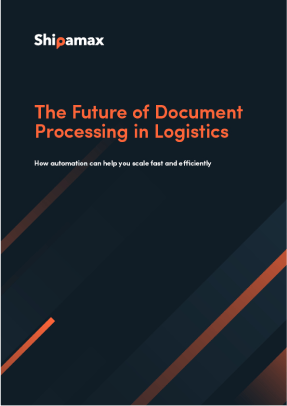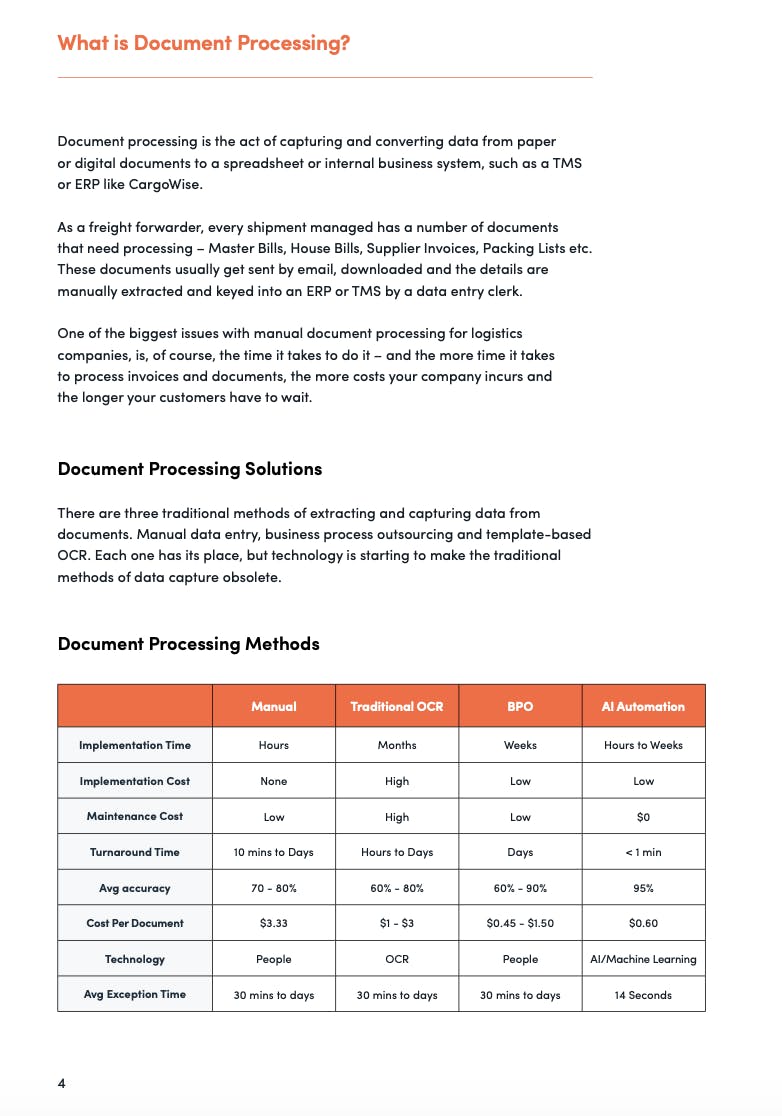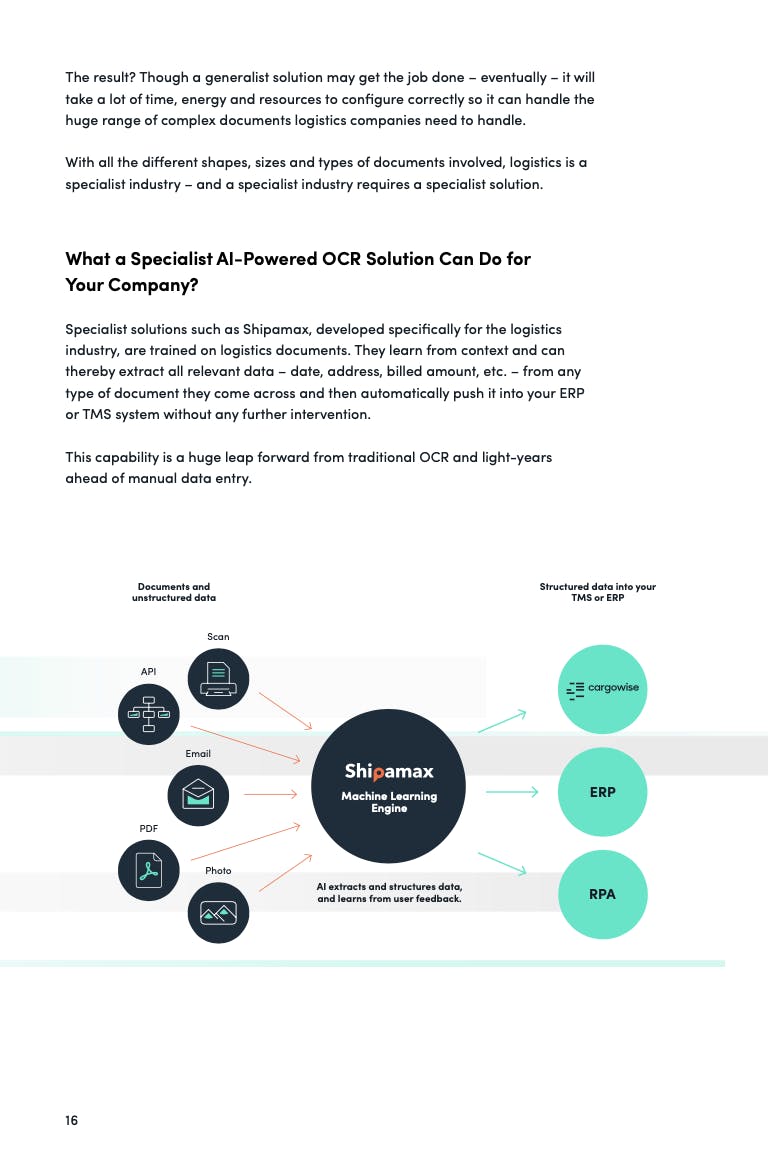Free eBook: The future of document processing in logistics
Learn how automation is reshaping document data capture for operations teams in the logistics industry in our free eBook.
What will you learn from this free eBook on document processing technology?
In this eBook, we’re going to be taking a close look at how document data processing has a profound impact on your logistics business. We’ll consider how the process itself has evolved from being exclusively manual to being supported with digital solutions such as template-based OCR and then look to the future to discover the value and far-reaching benefits of AI-powered, fully-automated document data processing for companies like yours.
We’ll explore in detail
- Methods of document processing for logistics
- Manual data entry vs OCR vs BPO vs AI Powered Automation
- The financial impact of human error on data entry
- The true cost of template-based OCR
- What an automation solution can do for your business
Who is the eBook for?
This eBook is for freight forwarders and shippers considering automated document processing to help improve the efficiency of data entry within their organisations.
Operations Directors, IT Directors, Solutions Architects will all benefit from the content we have put together within this eBook. Readers will be able to evaluate the costs and benefits of multiple document processing solutions, before deciding which option is best to help optimise their back office document processes.
Document Processing in Logistics
Document data processing. An essential task that is vital to your business operations – everything from purchasing to ordering and on to making payments. Yet it remains one of the biggest challenges for logistics companies.
There are three traditional methods of extracting and capturing data from documents. Manual data entry, business process outsourcing and template-based OCR. Each one has its place, but AI powered automation technology is starting to make the traditional methods of data capture obsolete.
OCR and Manual Data Entry are Old School
For decades, data entry was a task performed primarily by humans and in many cases still is. The trouble is, manual approaches are far from efficient. Manual data entry and extraction is time-consuming and repetitive – or, to put it more bluntly, slow, error-prone and costly.
In certain industries, traditional template-based optical character recognition (OCR) technology has come to the fore. If documents have low variability, traditional template-based OCR is a reasonably reliable technology. High variability and things can start to get expensive. OCR templates do improve data capture accuracy, but they are extremely expensive to set up and maintain. Read our comparison page on the benefits of Shipamax vs Traditional OCR software.
The Cost of Template Setup
50 hours $29 per person per hour 100 unique carriers to cater for = $145,000 on templates alone
*times based on tests with professional date entry teamsAutomation Technology is Now More Relevant Than Ever
In a recent survey of business leaders by EY, 41% of respondents said they were investing in accelerating automation as businesses prepared for a post-crisis world. AI-powered automation solutions elevate document data capture to towering new heights of efficiency and efficacy. For starters, automation greatly reduces the time spent on document processing. With AI-Powered Automation Software, it’s less than 60 seconds – ten times faster than a human.


